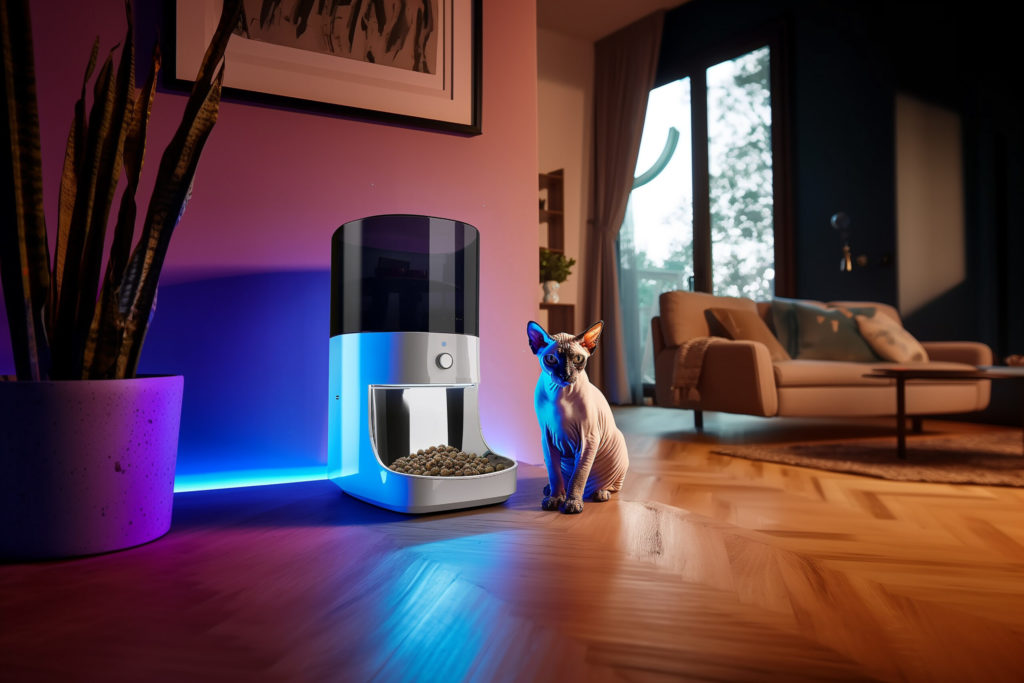This market research report was originally published at the Yole Group’s website. It is reprinted here with the permission of the Yole Group.
Amazon Echo hub features potentially market-changing presence detection technology.
Yole Group has found a new MEMS-based motion sensor technology in a teardown of the Amazon Echo Hub that is set to be a game changer for smart home devices.
The sensor, an STHS34PF80 by STMicroelectronics, not only detects motion but can also detect presence. Many smart home products have some kind of sensor to detect humans, but STMicroelectronics solution has a substantial differentiator from other smart sensor products on the market, explains Jim Mielke, VP Consumer Teardowns at Yole Group.
This analysis has been extracted from Yole Group’s Consumer Teardown and its Smart Home module. Consumer Teardown Tracks are the result of detailed physical and costing analyses. They are carried out by experts with academic and industrial backgrounds in the semiconductor domain. Consumer Teardown Tracks offer a clear and fruitful understanding of the technical choices made by the leading manufacturers. It also reveals accurate insights related to manufacturing costs.
Pyroelectrics technology leads the thermal sensors market in volume
The thermal sensor market was valued at US$1.3 billion in 2023 and is projected to reach US$1.9 billion by 2029, according to the Thermal Imaging and Sensing 2024 report. It encompasses several different technologies:
- For thermal imaging applications, the main technology employed is microbolometers.
- For thermal sensing applications, three types of technologies are identified: thermopiles – pyroelectrics – thermodiodes
STMicroelectronics, with its latest solution based on MEMS, is targeting the pyroelectrics and thermodiodes markets. Pyroelectric detectors and thermodiodes are finding applications in security systems, automatic doors, and occupancy sensing in smart buildings for both consumer and industrial markets.

According to the Thermal Imaging and Sensing 2024 report from Yole Group, these markets represented 301 million units in 2023 and are projected to reach US$294 million by 2029, with a 4.4% CAGR from 2023 to 2029 in value. Excelitas Technologies led the thermal pyroelectrics detectors market with 48% of the market share in 2023, followed by Murata (13%), Nicera (12%), Senba Sensing Tec (7%), and Infratec (3%).
MEMS displaces PIR in new device
Pyroelectric infrared (PIR) sensors are the current solution for human detection. They are used in many applications, including automatic lights, security lights, automated thermostats and electronic doorbells. However, they can only detect motion. The real goal of the sensor in most of the applications is to detect presence but the PIR technology it is not capable of this.

“Imagine having automated lights in your office or home that do not turn off if you are sitting still reading or just watching TV. The STMicroelectronics sensor allows smart devices to know you are still present in the room without having to wave your arms every few minutes to create a motion that the older sensors require. Devices incorporating this sensor can tell if a user is sitting in a room, reading, watching TV, or walking around and so on.”
James Mielke
VP Consumer Teardowns, Yole Group
STMicroelectronics has combined micro-electromechanical system (MEMS) sensors and complementary metal-oxide-semiconductor (CMOS) in a technology it refers to as thermal MOSFET (TMOS). The MEMS technology is used to isolate the MOSFETS from the rest of the system. This combination of technologies has allowed the company to develop this new presence detection functionality.
The STHS34PF80 includes a TMOS sensor packaged with a controller, whereas PIR sensors are strictly a sensing element thus requiring an additional external controller. Despite the higher integration, the STMicroelectronics sensor is physically much smaller in all dimensions compared to PIR sensors, enabling it to be used in a wider range of devices and applications.


STMicroelectronics to gain market advantage
This new sensor technology will likely put STMicroelectronics in a strong competitive position for the next couple of years, as the traditional suppliers of motion sensors do not have the background in MEMS to produce devices with presence detection.
Companies like Nicera, Excelitas technologies, or even Panasonic electric works (incumbents in the motion sensor market) lack the MEMS infrastructure to follow STMicroelectronics’ presence sensing technology in the near future. This could have the effect of pushing a group of manufacturers out of the smart home device sensor market.
While PIR is a metal-crystal material, using MEMS in the sensor switches another function to semiconductor technology—with semiconductors playing an increasingly vital role in a range of systems and applications.
Yole Group expects to see STMicroelectronics’ TMOS sensor appear in more smart home devices in the future.
Stay tuned on yolegroup.com!


